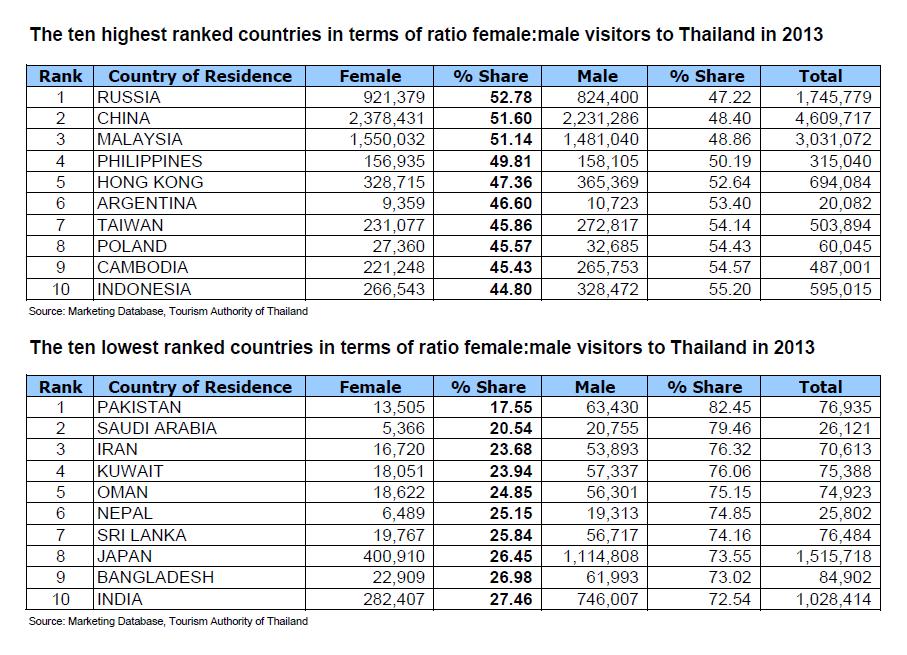
3 Jul, 2014
Exclusive: 2013 Thai Visitor Profile Stats Show 22.7% Surge in Female Arrivals
BANGKOK – Female visitors to Thailand surged by 22.7% to a record high of 11,426,411 in 2013, according to a full profile of the arrivals for last year released by Tourism Authority of Thailand this week. While the total number of arrivals are released every month, a detailed analysis of the profile and expenditure usually takes six months. These are now out.
The analysis shows that it was the first time female arrivals crossed the 10 million mark. The growth rate was well above the 18.76% increase in total visitor arrivals to Thailand in 2013, which hit a record 26,546,725.
The ratio of male:female travellers improved from an overall 58:42 in 2012 to 57:43 in 2013. The trend was led by Russia, Malaysia and China, the only three countries that generated more female travellers than males. (See detailed tables below).
The number would have been even better had the industry not been hit by the slowdown caused by the simmering political disturbances in November-December 2013.
The figures mark a great success for one of the most energetic marketing campaigns in the history of global tourism – to shift the image of the Thai tourism industry from being largely male dominated to one that is popular with women and friendly to families.
For several years, the TAT has hammered away at three niche-market themes that have played a crucial role in shifting this mindset — shopping, cuisine and health & wellness. Thailand’s tourism product range is now dominated by facilities and services catering to female visitors, both young and old.
Other demographic trends have also played a role in influencing this trend, such as the increasing number of women in the global workforce as well as their growing role in the holiday decision-making process. The TAT has also targetted the increasing number of women on the social-media circuit.
Although Thailand’s nocturnal entertainment facilities are still around, they no longer dominate the tourism mindspace. Female arrivals from Europe and North America are also on the rise; their numbers from Europe as a whole grew by 15.9% to 2.6 million while male visitors grew by 10.7% to 3,541,874, for a ratio of 57:43.
Female arrivals from Germany were up 14% to 284,977; from Austria up 17% to 40,794 and Belgium up 11.2% to 34,780. There has also been above-average growth in female visitor arrivals from the Eastern Europe countries and the Commonwealth of Independent States.
However, there is a long way to go before a better gender balance can be achieved. Two of the seven countries which generated more than one million visitor arrivals for Thailand last year are also in the list of the 10 lowest ranked gender-parity ratios – Japan and India.
Because women are known to be especially sensitive to safety and security concerns, this year is likely to see some regression in female arrivals because of the steady decline in total visitors all through the first half, thanks to the political standoff.
However, the TAT is holding its marketing planning meetings this week and will be making a strong effort to recoup the losses over the second half.
The TAT has made the pursuit of balance a primary focus of its 2015 marketing plan. This involves balancing new markets with existing markets and leisure travellers with niche-market travellers. Female visitors play a critical role in both.
Attaining a better male:female balance is a critical component of that strategy, especially in terms of tapping new markets. It is also critical to bring back the female visitors because of their major contribution to expenditure figures.




Liked this article? Share it!